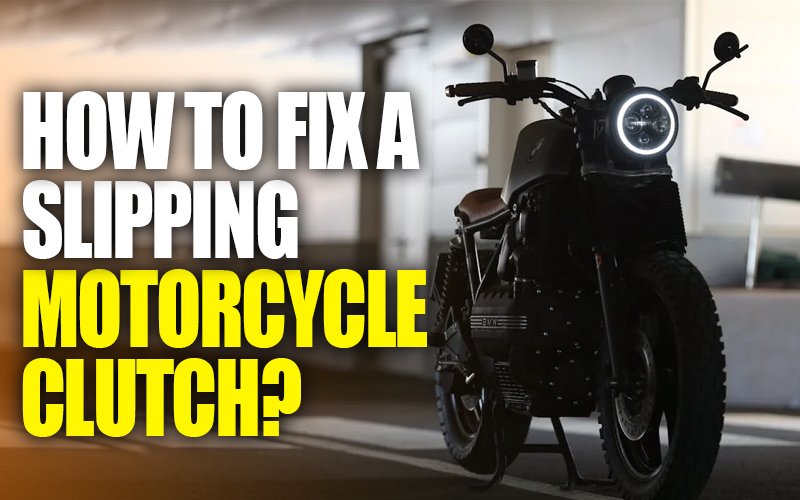
-
By Jenson Castillo

Imagine riding your motorcycle on a sunny day, feeling the wind in your hair, and everything is perfect. But suddenly, your bike jerks and the power seems to disappear. The engine is still running, but it’s like the bike just doesn’t want to move as fast. Your motorcycle clutch might be slipping.
When a motorcycle clutch slips, it’s a warning that something is wrong. But don’t worry! Let’s talk about how you can fix it so you can get back to enjoying the ride.

So, what does it mean when your clutch is slipping? Well, your bike’s clutch connects the engine to the back wheel. When it slips, it’s like pressing the gas but your bike doesn’t speed up. The engine gets louder, but the bike stays slow. It feels like you’re giving it power, but nothing happens.
This happens when the clutch can’t hold on tight enough to the parts it’s supposed to. The power doesn’t get to the wheels properly, and that’s when you feel the bike slipping.

Now let’s look at why your clutch might be slipping. Here are some common reasons:
These are the usual reasons for a slipping clutch. Let’s see how to fix them.

Now that you know what might be wrong, here’s how to fix it. You don’t have to be an expert mechanic—just follow these steps.
Sometimes, fixing a slipping clutch is as easy as adjusting the clutch cable. Here’s what to do:
Test your bike to see if the problem is gone. If not, move to the next step.
If adjusting the cable doesn’t help, you might need to check the clutch plates.
When you get new clutch plates, soak them in oil before putting them in to make sure they work well.
If you see oil on the clutch plates, that’s a problem. Oil makes the plates too slippery. Fix any leaks that are letting oil get into the clutch, and clean the parts before putting them back.
If the springs in the clutch are weak, they won’t hold the plates together tightly. Here’s how to replace them:
Strong springs will help the clutch grab properly, so it doesn’t slip anymore.
Once you’ve fixed your slipping clutch, you’ll want to keep it working well. Here are some easy ways to do that:
Fixing a slipping clutch might seem hard, but with the right steps, you can do it. Understanding how your clutch works and keeping it in good shape will help you enjoy a smooth ride, every time.
The road is waiting for you, and with your motorcycle clutch working properly, nothing can stop you. So, get your hands a little dirty, fix that clutch, and ride with confidence!
Share :
Subscribe to our fortnightly newsletter with stories from our latest adventures and the best travel tips